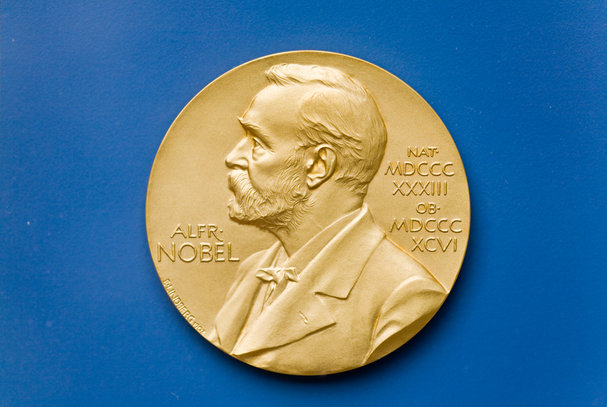
Credit: Editorial/ Alamy Stock Photo
Science has a problem giving credit where it’s due
Apportioning author credit in large collaborations is as problematic as the Nobel Prize’s rule of three.
12 December 2016

Editorial/ Alamy Stock Photo
In late September, the 2016 Nobel Prize in Physics hadn’t yet been announced but the scientific community was already concerned. Some worried that if the award was given to the scientists who’d helped confirm the existence of gravitational waves, the Nobel committee’s strict rule against splitting merit more than three ways would mean a key researcher in the team would miss out.
Barry Barish, a physicist at the California Institute of Technology, had led the team at the Laser Interferometer Gravitational-Wave Observatory (LIGO) that in February confirmed Einstein’s 100-year-old prediction, but three other physicists had been credited with conceiving the LIGO experiment.
Their fears were immaterial; the physics prize went to a different trio of theorists who described strange states of matter. For Barish, the hand-wringing over the Nobel’s rule of three was another example of how the scientific community struggles to give fair recognition to researchers involved in large collaborations. “I might not get the Nobel Prize, but I get a lot of credit,” he says. “The bigger problem for us is how to recognize researchers who stood out but aren’t at my level,” he says.
More than a thousand researchers, engineers and technicians contributed to LIGO’s success over a period of 20 years. But the team couldn’t settle on who, and how many, deserved to be acknowledged as lead authors of their landmark paper. They took an egalitarian approach. “The easiest thing for us to do was to stick to alphabetical order,” says Barish.
CERN (European Organization for Nuclear Research) took a similar approach with two papers reporting the first sightings of the Higgs boson in September 2012, both which had more than 3,000 authors. The team set a record in 2015 by naming more than 5,000 authors on a paper reporting the exact mass of the elementary particle.
Barish says alphabetical order isn't the best solution. Large collaborations have been around for at least two decades, but “we don’t know how to do it better”, he says. Even developing the criteria for author inclusion raises many questions: do students count? What about researchers who have left the project? LIGO decided to include all eligible members, but other teams give members the choice to opt out.
The LIGO team are now studying other collaborations to develop a set of best practices for authorship of large groups. “We need large collaborations for science to progress and have become pretty good at managing the technical aspects, but the human problems are not simple,” says Barish.
While LIGO and CERN can negate the politics surrounding credit for a project by naming all authors, Nobel committee members are forced to decide.
When the Higgs discovery was awarded the Nobel Prize in Physics in 2013, it was presented to Peter Higgs, from the United Kingdom, and Francois Englert from Belgium, two theorists who had predicted the particle’s existence rather than the two large teams whose experiments had observed the mysterious particle a year earlier. Two years later, the prize was awarded for the observation that neutrinos have mass. This time, it went to Arthur McDonald and Takaaki Kajita, two leaders of large facilities that detected the tiny particles.
Jan Lindsten, a member of the Nobel Committee for Physiology or Medicine between 1979 and 1990, says they sometimes had to reject group nominations because it was impossible to limit the number of prize winners to three. “Identifying the most important candidate for a prize in a given year isn’t a choice between a good or bad idea. They are all extremely good discoveries; there will always be a subjective moment at the end.”
Newer prizes have taken a less restrictive, but no less controversial, approach. In May 2016, LIGO received a Special Breakthrough Prize in Fundamental Physics, of which US$1 million went to the three LIGO founders and US$2 million was shared between the 1,012 contributors. “Recognizing a thousand people dilutes the prize,” says Barish. “It is fine to recognize a whole experiment, but once you divide the monetary reward by a thousand it becomes irrelevant.”
